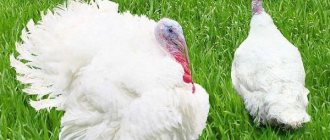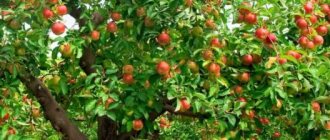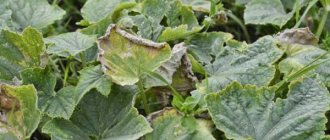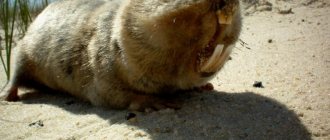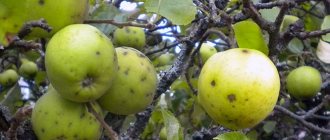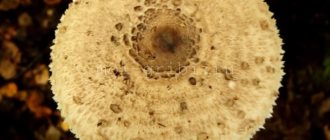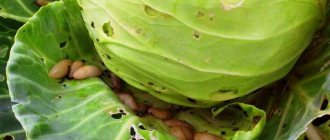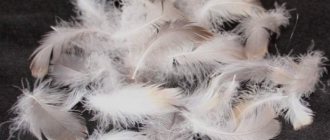External differences
When raising poultry, the purpose for which the poultry farm is started plays an important role. Someone wants to get productive offspring and sell them for profit. Others strive to raise a bird with positive qualities and the ability to survive weather conditions in the fall and winter. If there is no correct balance in quantity, then it is unlikely to achieve results in breeding.
The following signs will help you distinguish a drake:
- he is larger than a duck;
- has a bright plumage color;
- a feather crest is formed on the neck;
- a wide triangle above the beak towards the forehead;
- presence of a beard (feather);
- larger beak.
It is not always possible to rely on external indications, since they can also be influenced by the conditions of detention and the diet of birds.
Characteristics of wild ducks
More than 150 species of ducks live in nature. Some of them are commercial. Drakes of wild ducks are distinguished by their bright plumage. During the mating season, the color of their feathers becomes rich and bright. Females, on the contrary, are modest in their attire. Most often it is monochromatic, gray, brown, red. Feathers form an ornament on the body that is characteristic of a particular breed.
In spring, drakes shed their bright plumage and look like a female. In this case, the size of the individuals matters. Males are always larger than females. During the winter molt, they are again covered with beautiful feathers, which remain until the mating season. Ornithologists note distinctive features in individuals of different sexes:
| Breed name | Characteristics of the drake | Characteristics of the female | ||||||||||||||
| Mallard |
|
| ||||||||||||||
| Gray duck |
|
| ||||||||||||||
| Teal-whistle |
|
| ||||||||||||||
| Teal |
|
| ||||||||||||||
| Wigeon |
| body 45 cm; weight – 1000 g; light gray body; The chest and abdomen are light brown. |
Experienced hunters and ornithologists can recognize a drake and a female by their voice. Ducks most often quack abruptly. Males can hiss, whistle, crackle, and produce intricate trills. It is especially important to pay attention to the voice of wild birds after the spring molt, when the drakes lose their bright feathers.
Differences in character
The criterion for determining the sex of representatives of the duck family is their behavior and character. The method allows you to determine the sex of a bird with an accuracy of 80%.
It is possible to identify a bird by its character only from 2-3 months of age; before that, the young, regardless of gender, behave the same.
- Drakes are true “gentlemen”. Wherever they are - in flight, in the water or on a walk - the mallards are allowed to go ahead, while they themselves are positioned a little behind as a “spies” for the flock. Only the absence of a female to incubate the eggs can force them to run ahead of each other.
- An excellent and proven method is to take the chick by the legs and hang it upside down. If it is a “boy”, it will try to turn its head and look around, the female hangs motionless.
Why determine gender?
Clear differentiation of animals by sex is a question that invariably arises before the farmer at different stages of poultry farming. So, for example, this is necessary when:
- purchasing breeding material for breeding (the main thing in raising ducks is eggs, regardless of whether they are the final product or sent for incubation, so the farmer definitely does not need to accidentally buy an extra number of males. In addition, for higher productivity and obtaining offspring with strong immunity, experts advise purchasing males and females from different sellers, and, not being able to distinguish between birds by gender, the breeder is not immune from deception);
- drawing up the correct proportions of the parent flock (each species of bird in this regard has its own optimal norms, the violation of which negatively affects productivity);
- raising young animals (timely separation of boys from girls and their subsequent separate keeping is mandatory to prevent too early maturation and uncontrolled inbreeding, especially undesirable when breeding birds of valuable breeds);
- When breeding ducks for meat (since males gain more weight than females, when purchasing ducklings for future slaughter, it is more profitable to give preference to boys.
Sexual characteristics
The correct ability to determine the sex of a bird gives the owner of a poultry yard many advantages.
- Drakes are more resistant to diseases.
- The female part of ducks are calm birds that do not strive to fly.
- With an optimal number of drakes and ducks, productive and healthy offspring will be ensured.
It is important to understand that the main reason for being able to distinguish a male from a female duck is the correct management of poultry farming. An indicator of belonging to the “strong” sex can be a beard or mustache. Thus, you can independently distinguish a male from a female turkey duck. During the period of sexual activity, adult males do not let their lady out of the zone of attention and try to always be close.
Interesting fact: failure to observe the correct quantitative proportions often prompts birds to form same-sex pairs. Dominant females may even exhibit drake-like behavior when mating with a male. Therefore, you should not completely rely on this method.
Old-fashioned method
Determining gender by voice is not a very reliable method. However, usually females quack often, their quack is sharp and loud. Drakes make sounds noticeably less often, mostly preferring to hiss, sometimes switching to soft whistling. There is another popular method of determining sex. To do this, the duckling is carefully taken by the paws and lowered upside down. If it begins to actively break out, then it is considered to be a drake. If it hangs quietly, it is assumed to be a duck. There are different opinions about the reliability of this method, but it clearly does not provide 100% reliable identification.
Voice difference
To distinguish the gender, you can also use a voice prompt. Ducks are capable of making not only quacks, but also other sounds: trills, hissing, whistling, cackling. Moreover, this bird has swearing, trumpet calls, and laughter. Male and female ducks have differences in the structure of the respiratory canals and trachea. In the drake, a sac-like expansion begins in this zone, which can amplify any sound. And as soon as the chick approaches a month of life, it begins to make sounds that differ from the quack of the female - whistling, hissing. He is not so talkative and produces mostly the same type of sounds.
History of origin and distribution
The Peking breed of domestic ducks was bred more than 300 years ago in China and brought to Europe in 1873. Currently widespread in the world and, being highly productive and one of the best meat breeds, it has supplanted many other breeds.
Peking ducks have been used to create several other breeds.
In Soviet times, Peking and crosses of this breed accounted for more than 90% of the pedigree duck population on collective and state farms.
In modern Russia, the main poultry population in large duck farms still belongs to the Peking breed.
Sex determination using the Japanese method
Many farmers call sex determination based on the structure of the inside of the bird's cloaca Japanese, although some know it as ancient, grandfatherly. Before carrying out the procedure, you should not feed the duckling for at least 4-5 hours. A distinctive feature of the sex of a drake from a duck is the presence of a fold located at the edges of the cloaca. It is also called pseudopenis. Only the drake has it. It is due to its presence that bird breeders quickly and without mistakenly determine the sex.
How to do it:
- take the duckling in your left hand with its head towards you;
- With the fingers of your right hand, open the anus, pulling it towards the abdomen.
If everything is done correctly, the drake will develop a rudimentary spiral-shaped penis up to 2 mm. In a female bird, only spherical growths will be present.
The described method to independently distinguish a male from a female Indian duck and other breeds gives a 98-100% guarantee. But this method has its own characteristics. Chicks' organs are not yet so developed, so this method makes it much easier to identify older drakes.
Feeding ducklings
Starter feed will solve all problems with feeding at first, but soon you will see for yourself that babies eat everything, and expensive feed can be removed from the diet. All your garden weeds will be used, except for poisonous plants.
Among green food, onions should be noted. Ducklings eat it with great pleasure. The benefit to young animals is enormous. It is a strong phytoncidal agent - when consumed, the bird gets rid of pathogenic bacteria in the intestines, and prophylactic antibiotic feeding can be canceled. Dairy, cool porridges are very useful for young birds. Milk contains a lot of protein, which is easily and quickly digested and goes towards building up protein mass, and boiled crushed cereals are well digested and ducklings quickly gain weight.
The most profitable way of growing is free pasture. In the morning and evening, the bird should be given the daily amount of grain feed. However, it is worth remembering that ducklings grow very quickly, and there is no need to constantly recalculate the daily allowance. The ducks ate and left, but the food remained - give less at the next feeding; if they ate everything quickly, but do not want to leave the feeders, increase the portions.
Raising ducklings
Table 2. Weight gain by musk ducklings
| Age in weeks | Grams |
| 2 | 280 — 320 |
| 4 | 950 — 1150 |
| 6 | 2550 — 1600 |
| 8 | 3550 — 2000 |
| 9 | 3700 — 2100 |
| 10 | 3900 — 2250 |
| 12+ | 4500 — 2400 |
At 12 weeks, the duck has reached its maximum weight and is ready for slaughter. At 13-14 weeks, molting will begin. The bird loses weight and becomes covered with awns. The new feather will finish growing by 20-24 weeks. But the fact is that by the age of 70 days the bird will lose weight and begin to fly. The first slaughter period is much more profitable in all respects.
Muscovy duck slaughter
Purchasing young animals and preventing diseases
When buying ducklings, ask about their age. If they are only a day old, they need prophylactic antibiotics for 3 days. The drug will be offered to you by the veterinarian. pharmacy. At the same time, buy a remedy for worms, which often affect waterfowl, especially those with access to natural bodies of water. The veterinarian you buy your medication from will tell you when and how to use it.
Pictured are Muscovy ducklings
Heating
For heating, a table lamp is quite suitable if there are only a few ducklings, or a special heating lamp. During the season they are sold in assortment. The litter should always be dry and clean, the water in the drinking bowl should be fresh.
Muscovy ducklings
At first, the ducklings should be kept in a pen during the day, and hidden in a shed or veranda at night. Ducklings can easily become prey for any predator. The pen for kids is not large and needs to be equipped with a removable mesh roof; part of the mesh needs to be covered with rain film. When the bird grows up, any structure, a hastily knocked together booth, will suit it for spending the night.
Keeping them for more than 12-13 weeks is not economically profitable - by this age the duck reaches a decent size and practically does not grow any further. Breeding birds are kept in exactly the same way as Peking ducks and geese, and, like geese and Pekin ducks, free access to water is highly desirable for indo-ducks.
Since the musk duck grows very quickly and is not picky about feed, it does not need special conditions, it can be raised in an ordinary country house. It doesn't bother the neighbors and makes little noise. A large pen is not needed.
Raising indo-ducks is a pleasant and not troublesome task
People who decide to breed Indian ducks should also remember that these birds fly well and can cause inconvenience. To deprive them of the ability to fly, you need to trim the flight feathers on the wings.
However, the advantages of musk ducks, such as fast growth, unpretentiousness, exquisite taste of meat and fertility, significantly outweigh all possible difficulties.
Folk way
There are proven and quite simple ways to distinguish ducks from drakes, which were used by our ancestors and modern farmers.
- In males, the lower part of the larynx has an expanded shape. To check, you need to palpate the chick's chest. Move your head to the side, raise your beak so that your neck is level. Place the thumb of your left hand on the upper vertebrae, and use your index finger to find and enter the triangle in the brisket. A tubercle should be formed in it - a hard sac connected to the bones of the chest, scapula and collarbone. This feature is found only in males.
- People say that male ducklings love to get involved in fights and conflicts. And it doesn't matter for what reason. The reason may be either the desire to dominate near the feeder, or the display of signs of attention towards the “fair” sex aged 1 month and older. If you notice that there are some in the herd, you can be sure that these are males.
Character and behavior
Regardless of external features and color, you can try to distinguish females from males by behavior. The males have clearly gentlemanly habits; they always try to let the ducks go ahead and stay behind. But while the females are incubating the eggs, the drakes let each other through in turns. Sometimes it happens that males copy the behavior of females, and they, in turn, behave like males. Thus, this method, like the others, does not provide a 100% guarantee.
If you carefully watch the ducklings, you will definitely notice an active little fighter and impudent one. This is definitely a drake. His brethren are also not difficult to spot, as he will not allow them to compete with him and get close to the food.
The male is also easy to spot during the mating season, when he transforms: his plumage acquires a brighter color and becomes lush. He makes every effort to win the heart of a beautiful lady and becomes a very attentive, caring and gallant partner. He will always be close to the duck, not allowing anyone to get close to it.
How to determine the sex of a duckling
The basic proven and scientific methods for distinguishing a drake from a duck are an excellent help for a novice and inexperienced farmer to raise a high-quality and productive poultry flock. These include the following determination methods:
- by external signs;
- the character of the bird;
- sexual characteristics;
- vocal data of the duck family;
- using an ultrasound machine.
When purchasing at the poultry market, the buyer may have problems. After all, for a farmer, the main task is to sell all the chicks, and not to keep the remains of one sex or another. In these situations, in order to determine the sex of the duckling unnoticed, you have to use a trick - ask to transfer the ducklings into the box yourself and use the folk method - turn them upside down, holding them by the paws. The boys are indignant and spin, the girls hang without resistance.
How to distinguish a musky duck from a drake?
The Muscovy duck or Indo duck is popularly called musk duck. In its appearance, it differs from its fellow tribesmen: it has a wide chest, powerful wings and limbs.
The name of the breed is borrowed from the word “musk”: it is believed that the oldest representatives of this species have the ability to secrete oil through the pores of the scalp with a specific odor.
Muscovy duck: female and drake
This breed is quite popular in breeding due to the following factors:
- Indian duck meat has a very delicate, pleasant taste and is dietary;
- eggs are also used in cooking;
- birds of this breed do not need a pond located near the walking area;
- birds belong to the category of homebodies, which significantly reduces the risk of losing their livestock due to its sudden departure.
There are both wild representatives of the breed and domesticated individuals.
An Indian drake flaunts its plumage in the courtyard
The main differences between musk duck drakes and females
The main differences between females and males of Indian ducks in terms of external characteristics are almost the same as those that apply to the entire duck family as a whole:
- size of birds: the drake will always be larger than the female, the maximum difference in weight ranges from 0.5 to 1 kg, in addition, the male’s body is wider with a well-developed chest;
- feather color: females look simpler and more modest compared to drakes. All efforts of females are aimed at caring and protecting their offspring. Bright plumage will only attract unwanted guests and endanger the lives of the chicks. Drakes, on the contrary, must be bright and attract the attention of female individuals in order to procreate;
- bend of the neck: in females, as befits ladies, the neck is more prominent and graceful, in males it is stronger and wider.
External differences in indo-ducks begin to form only after reaching 3 months.
Starting from 3 months of age, the listed external signs begin to appear, and to determine the gender of the birds, just a few seconds of a cursory visual examination is enough.
Video - Muscovy ducklings: how to distinguish birds by gender
Differences between different breeds
Sexual characteristics may differ in birds of the duck family, depending on their breed.
- Features of the Bashkir breed: rings of feathers formed in its tail will help to distinguish a drake from a duck.
- It is difficult to distinguish between a female and a male in the Pekingese. All of them have white plumage. The only thing that can indicate gender is the same ringed feathers in the tail.
- The musky breed can be identified by the presence of a knob-like growth above the beak and a large spot. It is not difficult to distinguish indo-ducks by their size - musk drakes are larger in size, weigh twice as much and are brighter in color.
- The wild ones are distinguished by the extremely bright plumage of the males and the inconspicuous, faded appearance of the brown, brown colored females.
- Breed favorite. Males are almost twice the size of females. The shape of the head is different - in drakes it is large, angular, and the neck is longer.
When selecting livestock, you should not use just one method, otherwise you may make a mistake. The characteristics of females and males can be deformed due to improper diet and living conditions. Therefore, according to experts, you need to focus on a number of methods.
To avoid confusion in your own backyard, it makes sense to put identification marks on the bird immediately after purchase.
Why is it important to find out your gender in advance?
Poultry keepers who have embarked on the exciting path of breeding birds of the duck family know that timely gender recognition is the key to the successful development of the future flock and gives poultry keepers the opportunity to increase the productivity of the livestock.
Determining the sex of a chick provides the following food for thought:
- the optimal ratio of females to males in the herd should be 4:1 - if there is a goal to increase the number of eggs, you should get as close as possible to these indicators;
- when breeding meat ducks, it is necessary to increase the number of males, since they produce more meat at the end - accordingly, it is possible to make adjustments in the early stages to the percentage of females and drakes;
- males have a good immune system and get sick less - again, this is a reason to think about increasing the male part of the duck offspring population;
- females are characterized by a soft, calm character, they are assiduous and rarely fly - if a large number of ducks are found, you should begin to competently arrange enclosures for their maintenance.
Knowing the sex allows you to draw up a detailed feeding schedule in advance and purchase the necessary feed.
